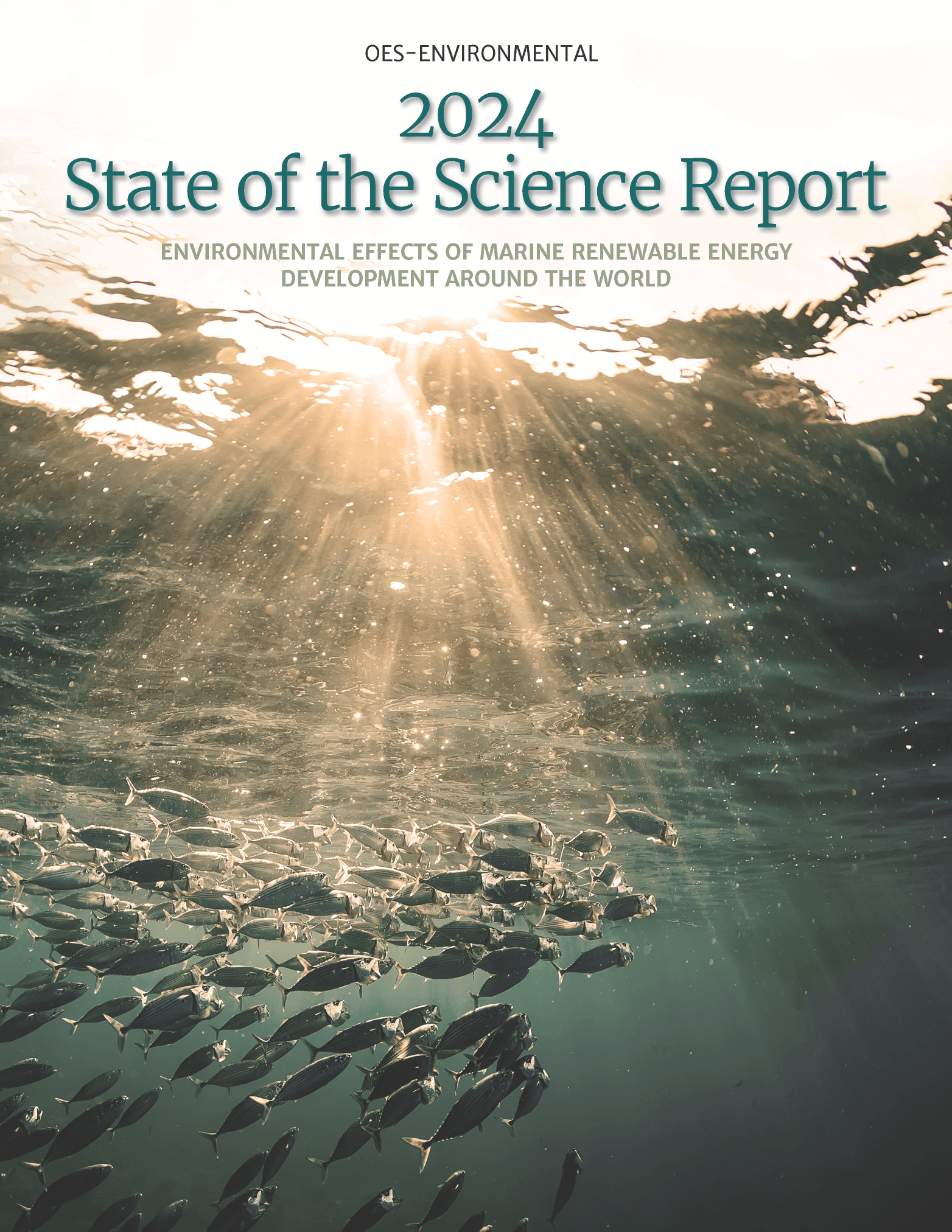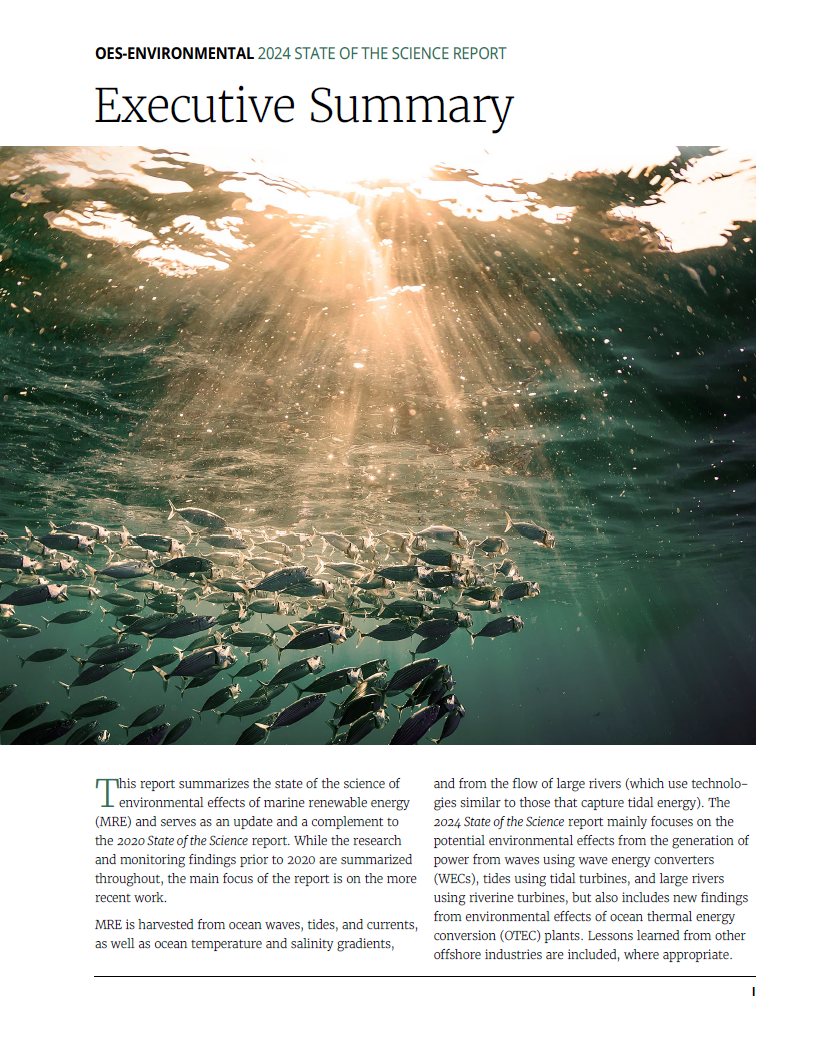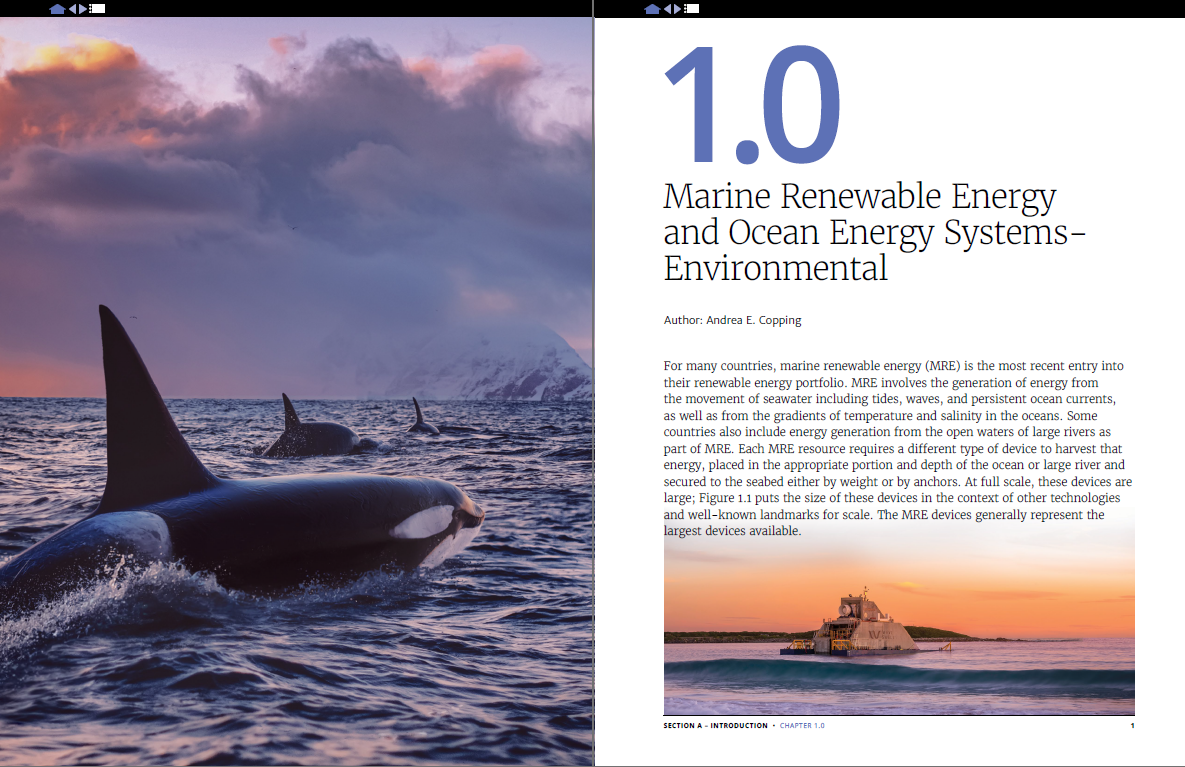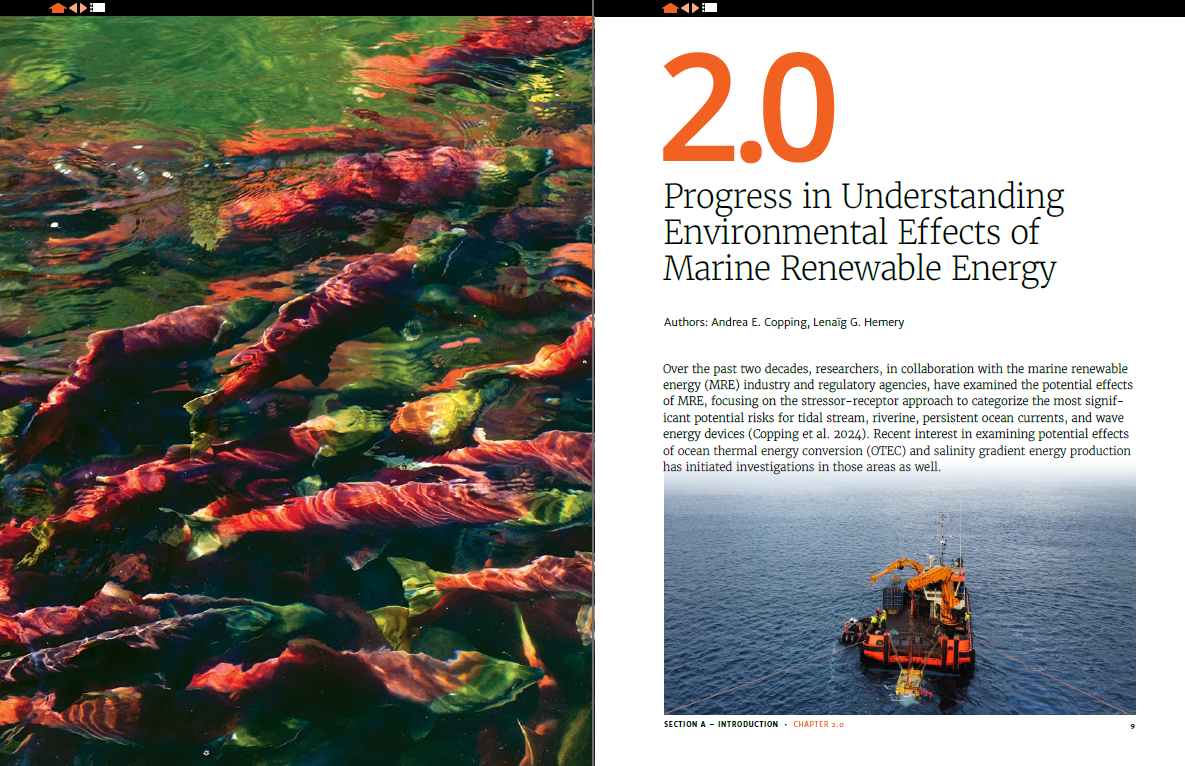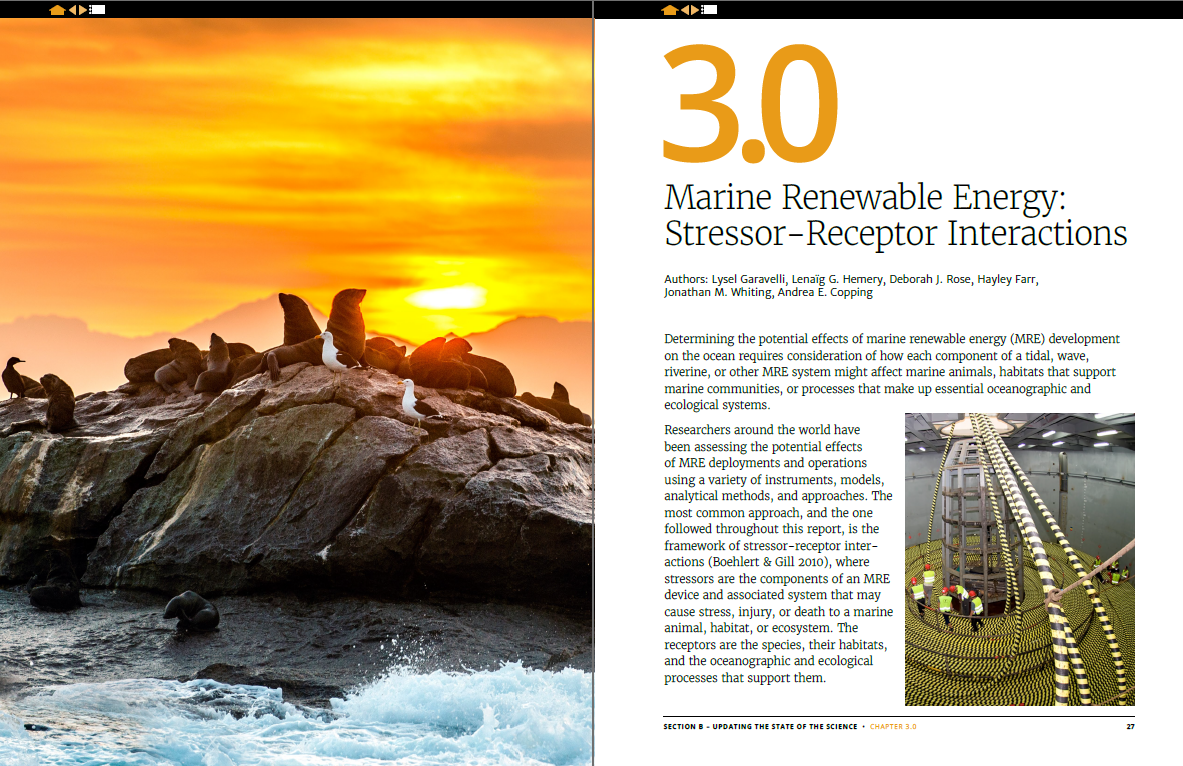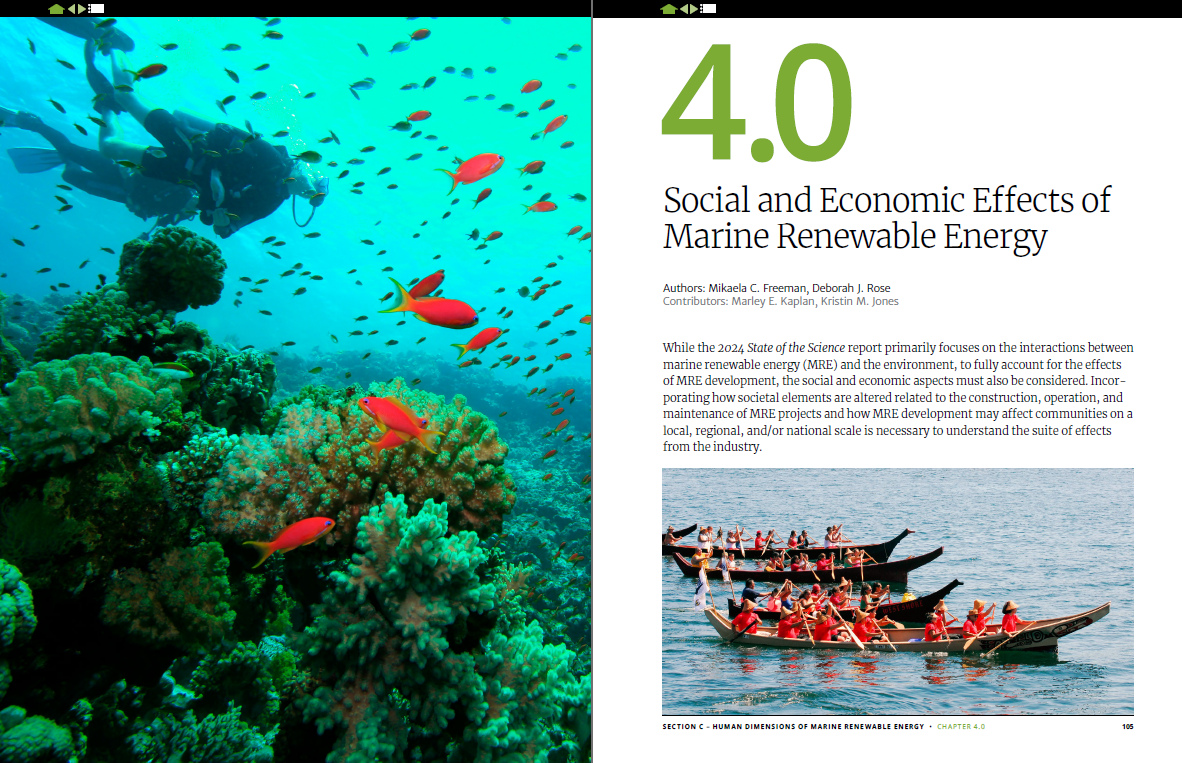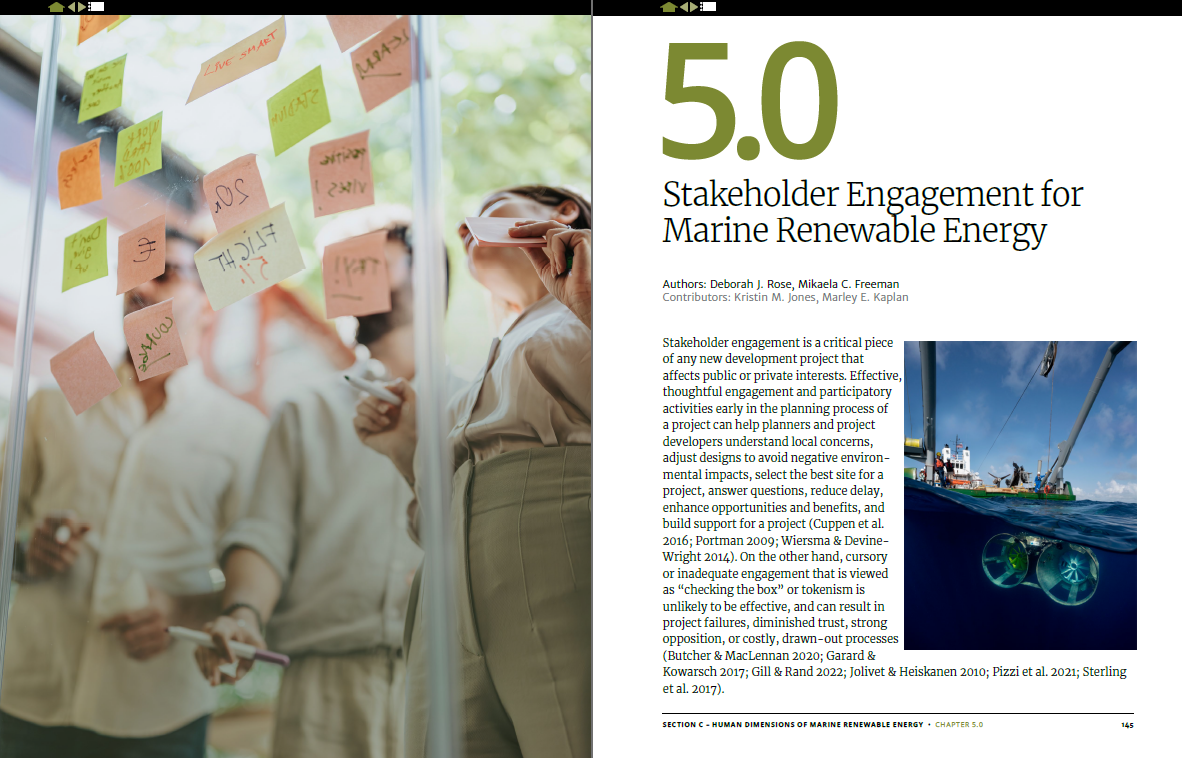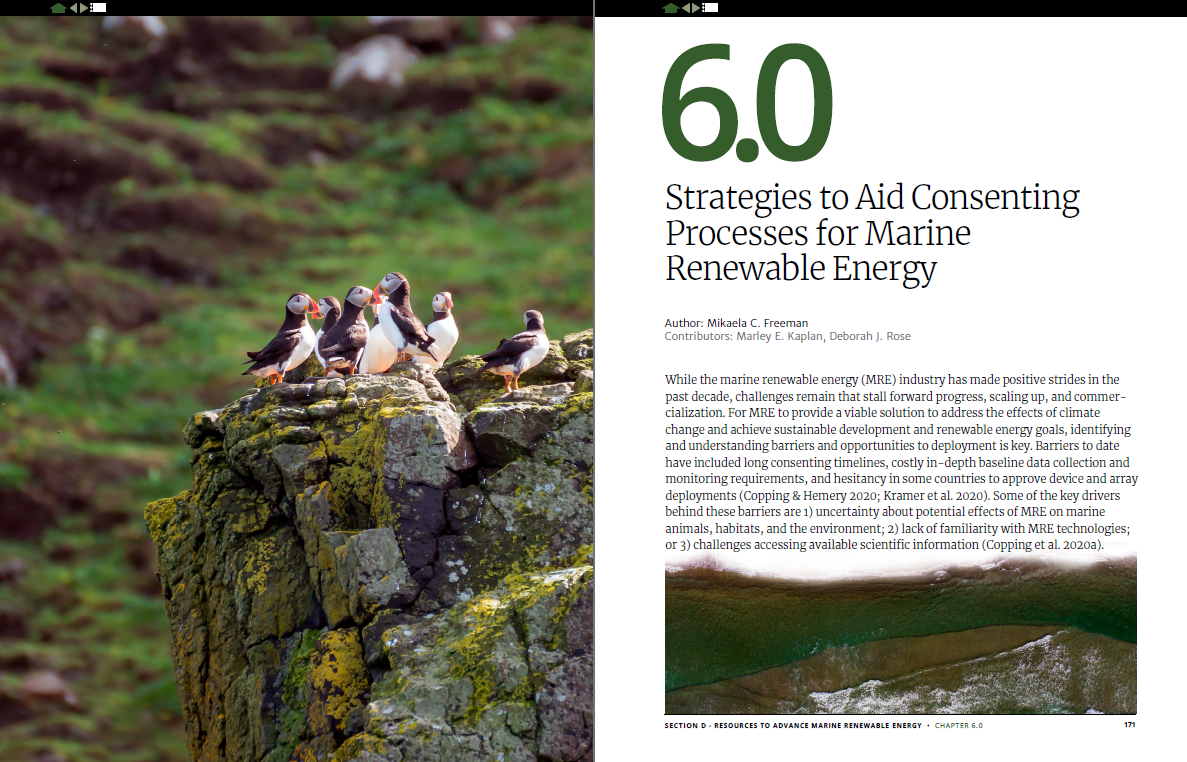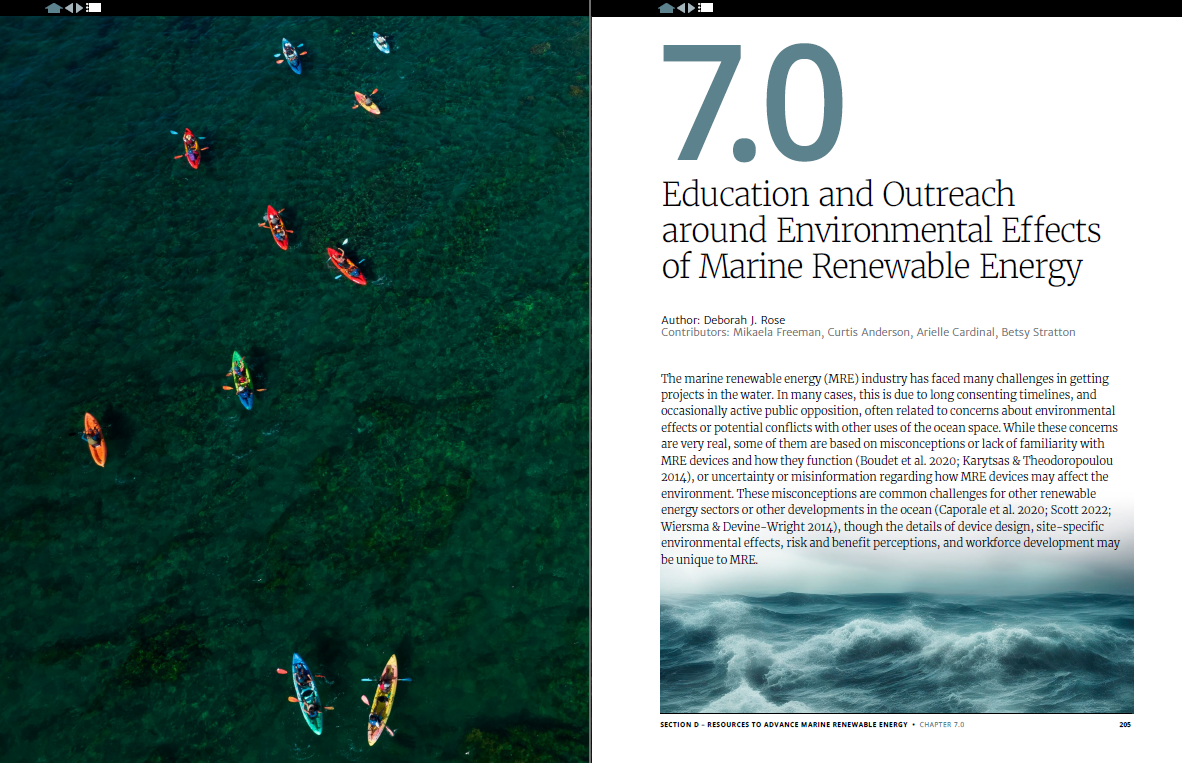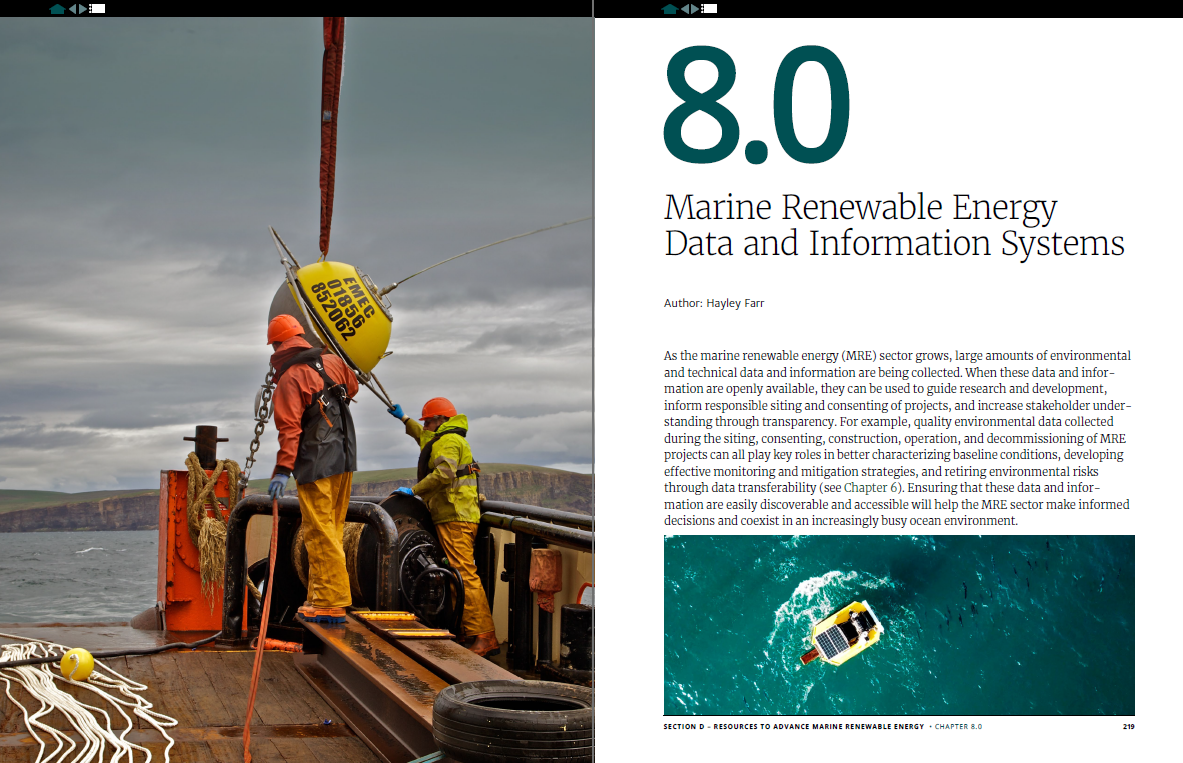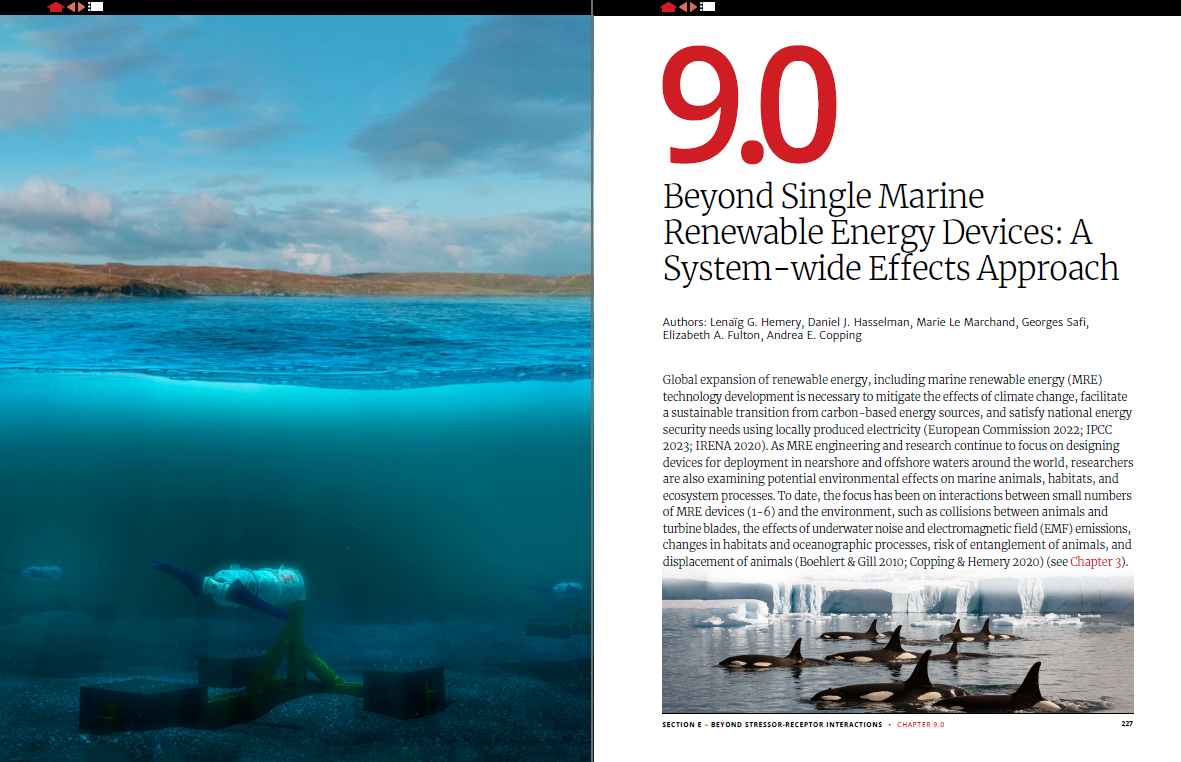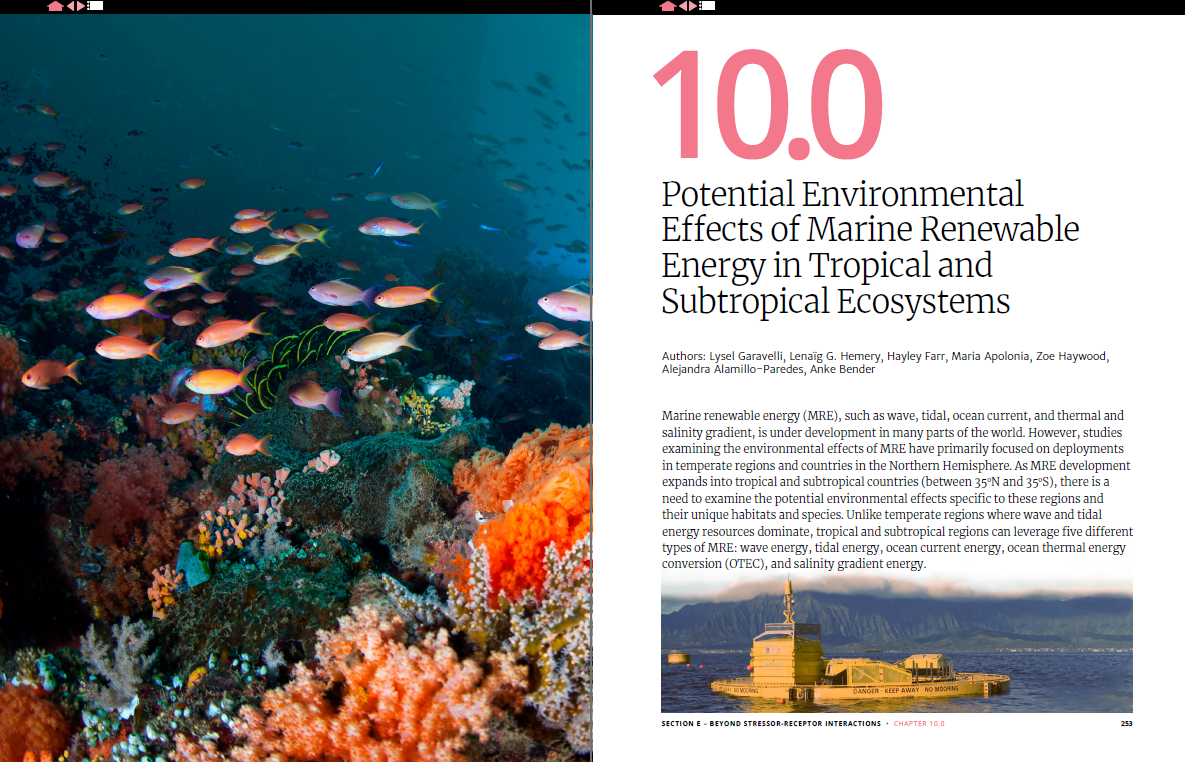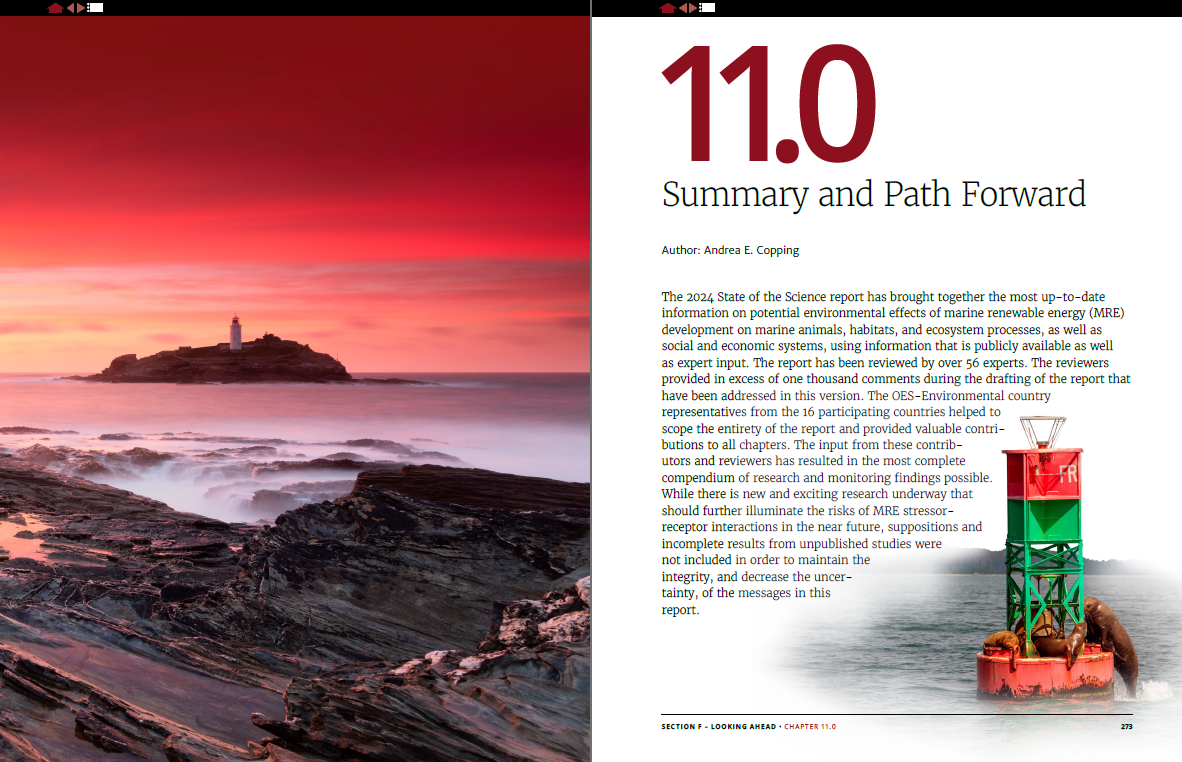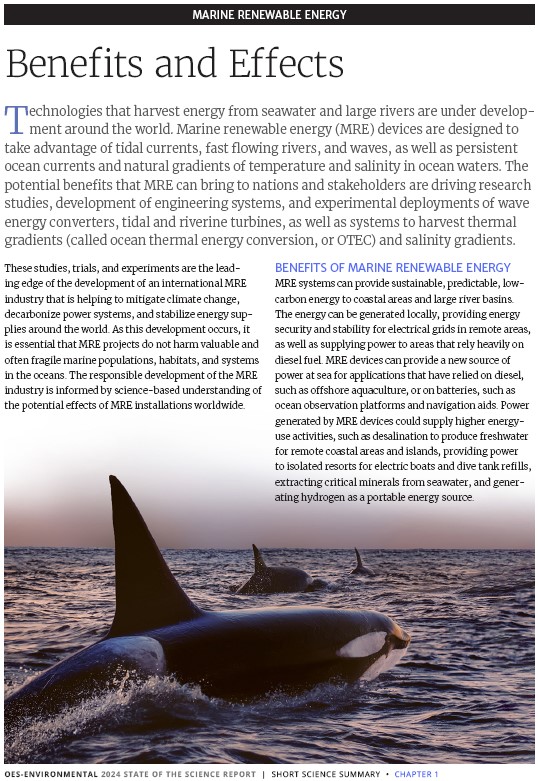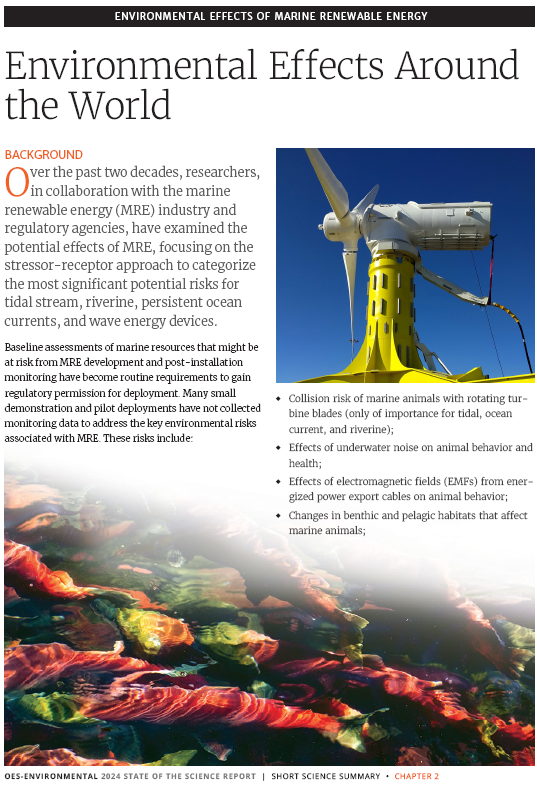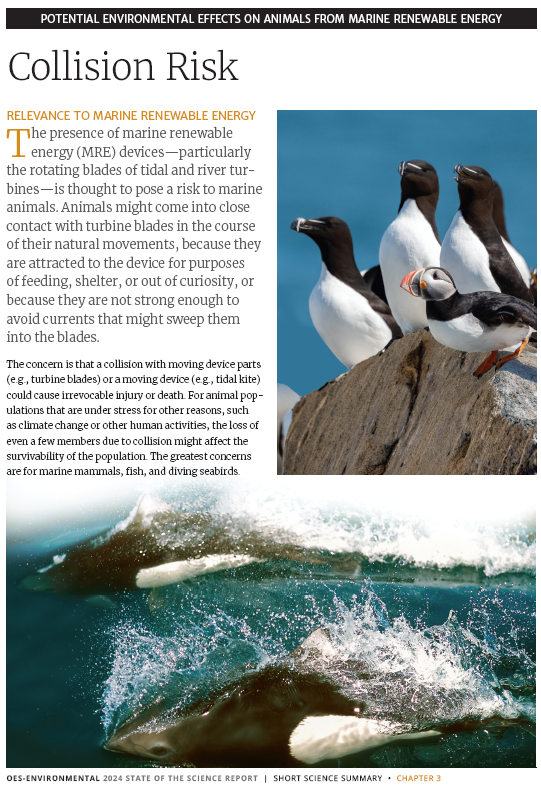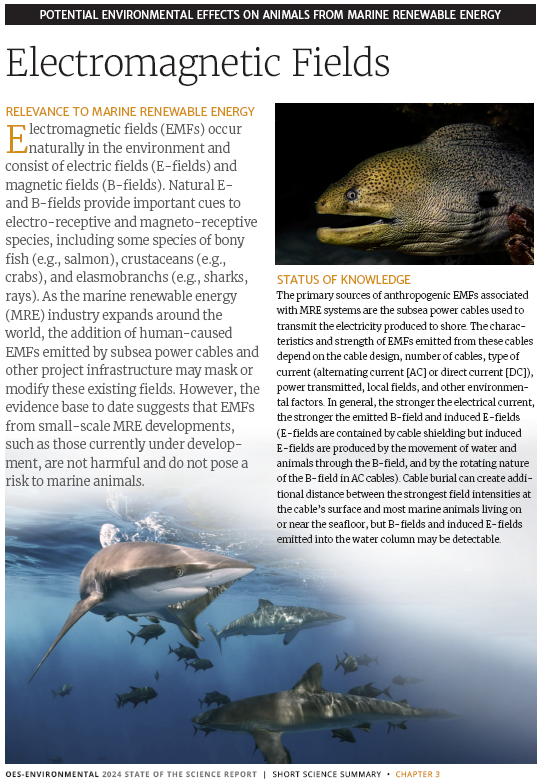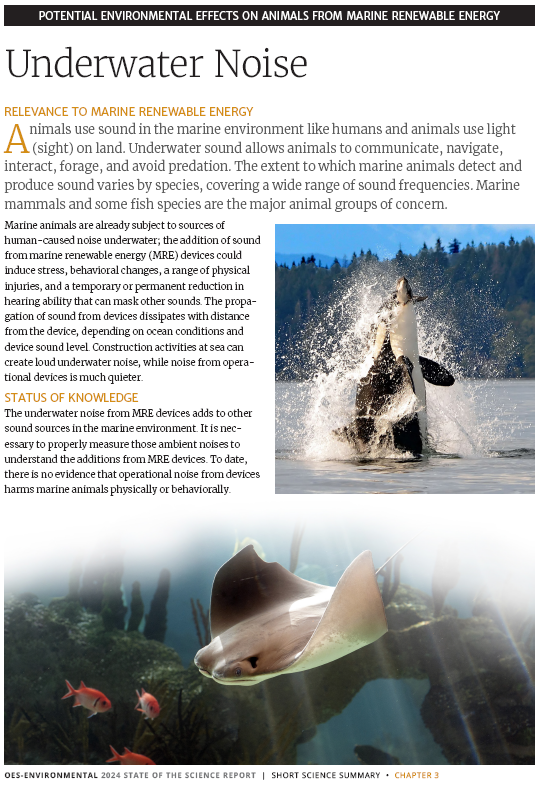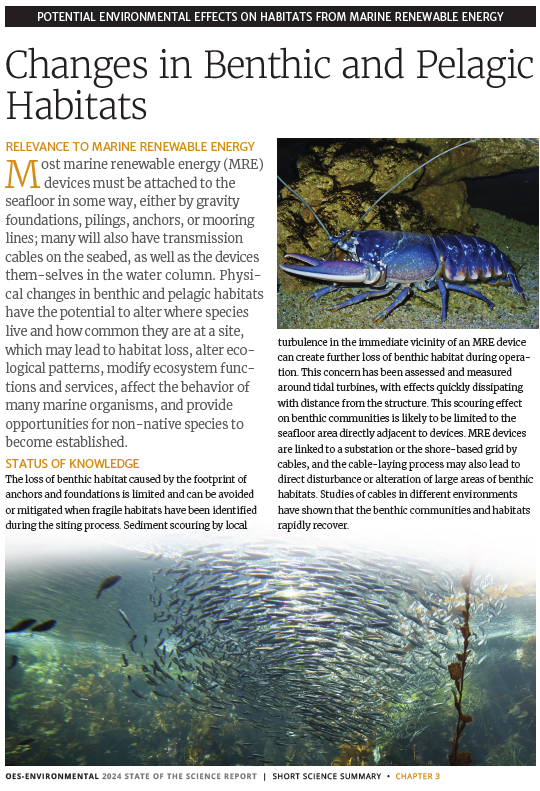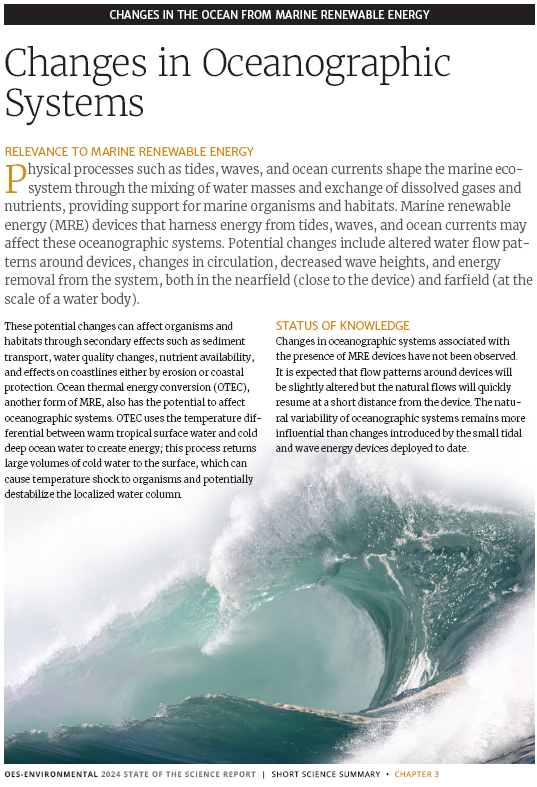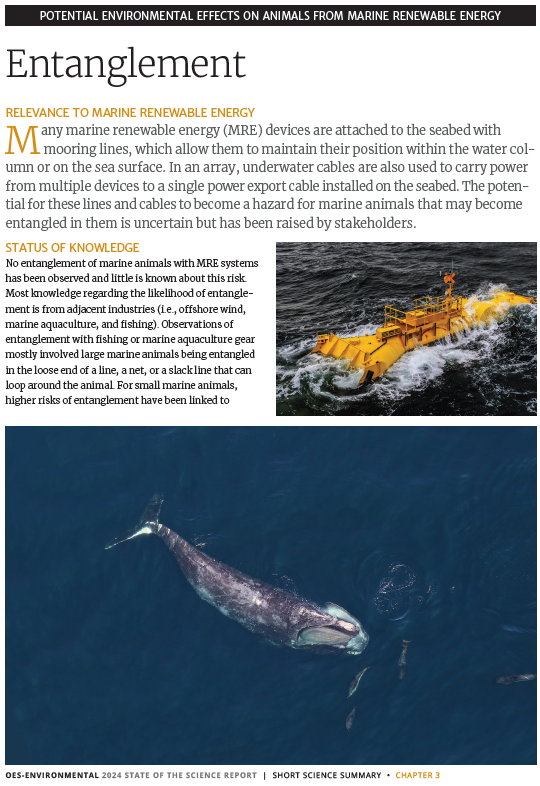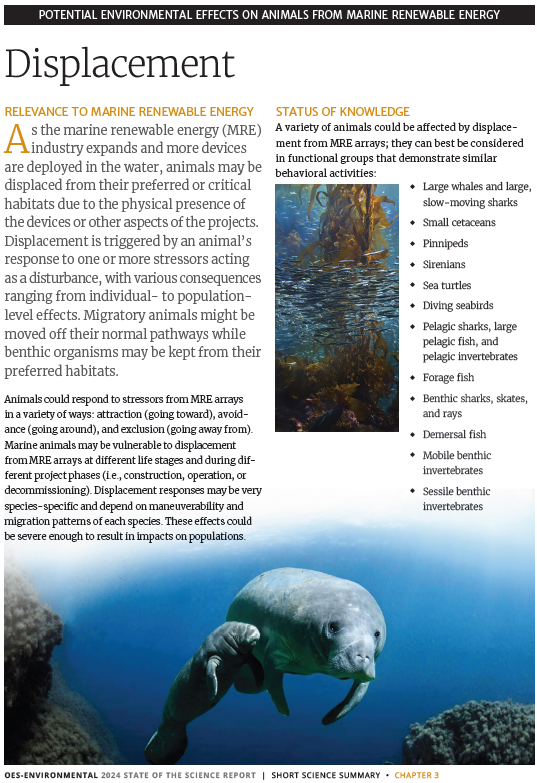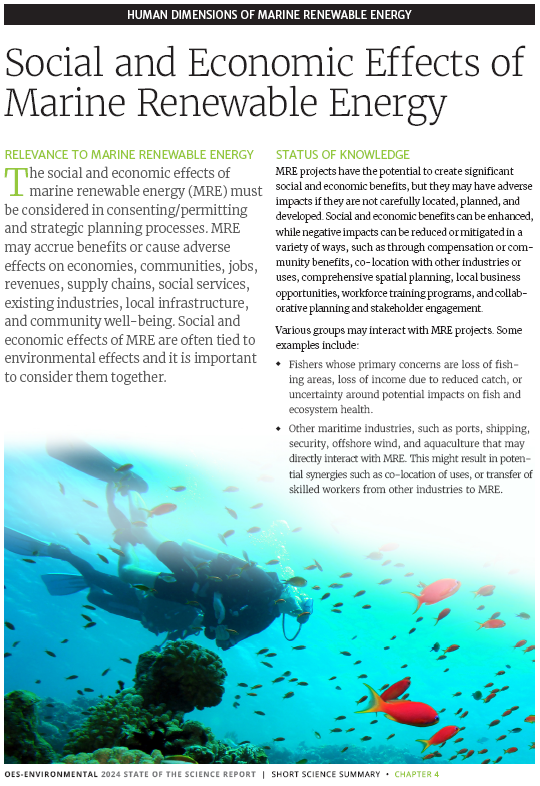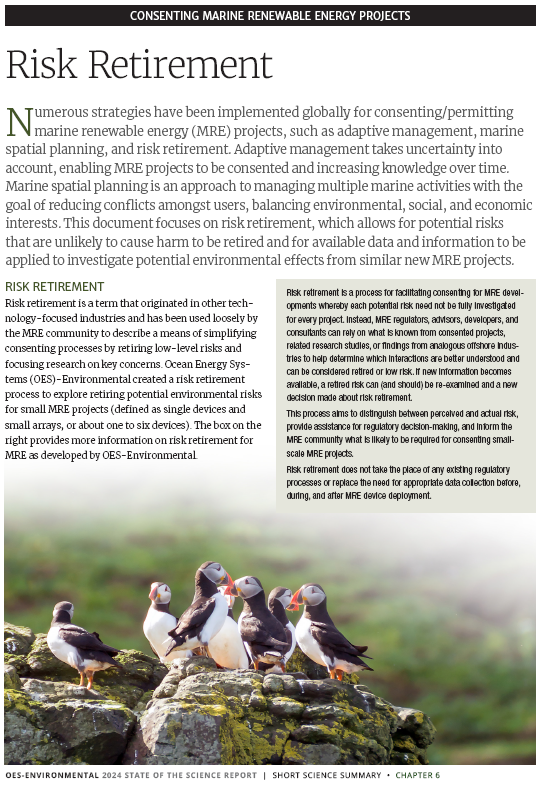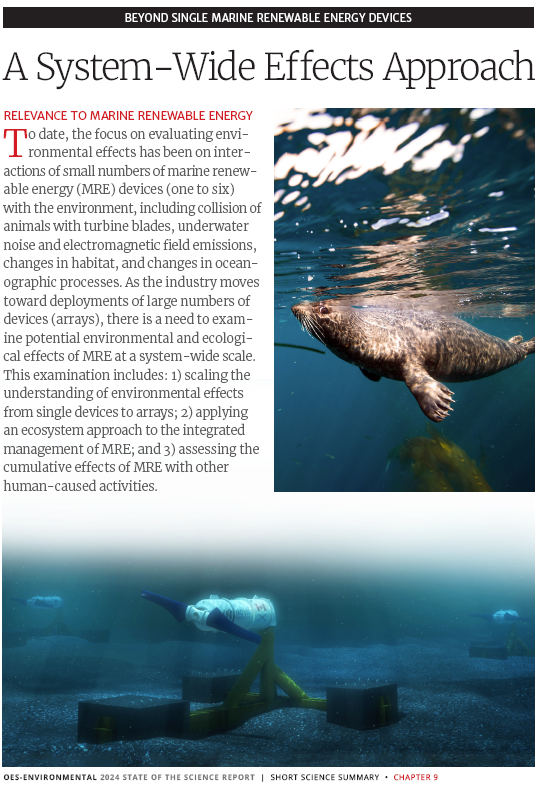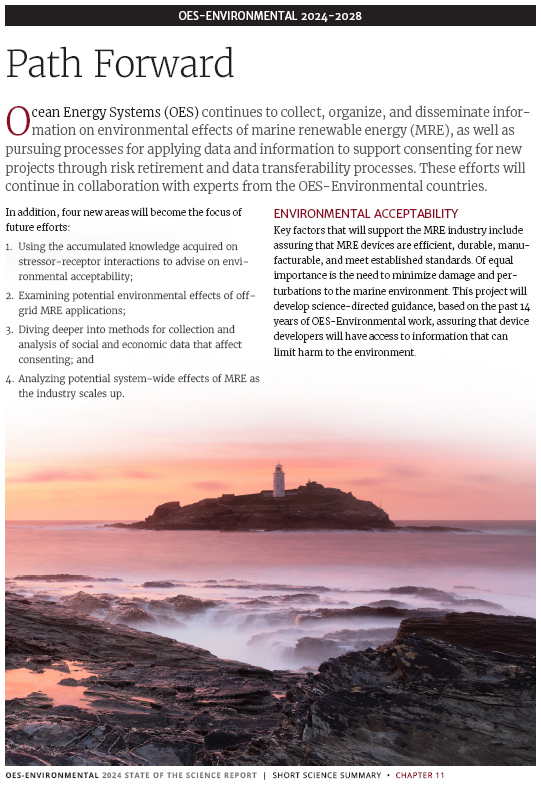Abstract
The OES-Environmental 2024 State of the Science Report: Environmental Effects of Marine Renewable Energy Development Around the World summarizes the state of the science of environmental effects of marine renewable energy (MRE) and serves as an update and a complement to the 2020 State of the Science Report. While the research and monitoring findings prior to 2020 are summarized throughout, the main focus of the report is on the more recent work.
MRE is harvested from ocean waves, tides, and currents, as well as ocean temperature and salinity gradients, and from the flow of large rivers (which use technologies similar to those that capture tidal energy). The 2024 State of the Science report mainly focuses on the potential environmental effects from the generation of power from waves using wave energy converters (WECs), tides using tidal turbines, and large rivers using riverine turbines, but also includes new findings from environmental effects of ocean thermal energy conversion (OTEC) plants. Lessons learned from other offshore industries are included, where appropriate.
This report has brought together the most up-to-date information on potential environmental effects of MRE development, using information from public sources as well as new scientific research. The Ocean Energy Systems (OES)-Environmental country representatives from the 16 participating countries helped to scope the entirety of the report and provided valuable contributions to all chapters. The input from these contributors and reviewers has resulted in the most complete compendium of research and monitoring findings possible.
Download the Full Report and Executive Summary
The Executive Summary provides a broad overview of the material in the full report.
Additional translations of the Executive Summary in other OES-Environmental languages are below:
Watch a webinar recording that provides an overview of the 2024 State of the Science and highlights key findings here.
Individual Chapters
The 2024 State of the Science Report encompasses an introduction and a path forward, as well as nine chapters that provide details of research and monitoring findings around the world on environmental effects of MRE.
Section A: Introduction
1. Marine Renewable Energy and Ocean Energy Systems
2. Progress in Understanding Environmental Effects of Marine Renewable Energy
Section B: Updating the State of the Science
3. Marine Renewable Energy: Stressor-Receptor Interactions
Section C: Human Dimensions of MRE
4. Social and Economic Effects of Marine Renewable Energy
5. Stakeholder Engagement for Marine Renewable Energy
Section D: Resources to Advance MRE
6. Strategies to Aid Consenting Processes for Marine Renewable Energy
7. Education and Outreach Around Environmental Effects of Marine Renewable Energy
8. Marine Renewable Energy Data and Information Systems
Section E: Beyond Stressor-receptor Interactions
9. Beyond Single Marine Renewable Energy Devices: A Systems-Wide Effects Approach
10. Environmental Effects of Marine Renewable Energy in Tropical and Subtropical Ecosystems
Section F: Looking Ahead
Short Science Summaries
Two page Short Science Summaries have been developed for many topics from the information in the 2024 report.
2. Environmental Effects around the World
3. Stressor-receptor Interactions
- Collision Risk
- Electromagnetic Fields
- Underwater Noise
- Changes in Benthic and Pelagic Habitats
- Oceanographic Systems
- Entanglement
- Displacement
4. Social and Economic Effects
6. Strategies to Aid Consenting Processes
9. Beyond Single Marine Renewable Energy Devices: A Systems-Wide Effects Approach

